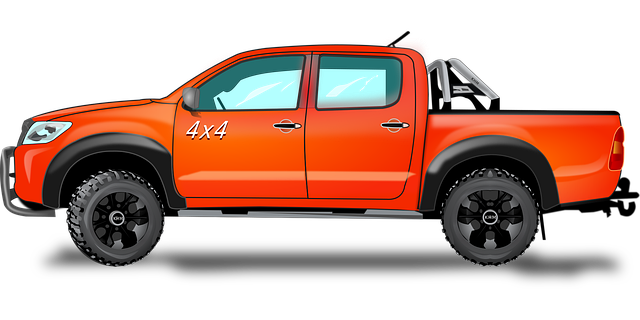Brake pads are essential for safe RGV-overland 4×4 repairs. They vary in type, with organic pads offering strong stopping power but faster rotor wear, while ceramic pads provide better heat dissipation, quiet operation, and rotor protection. Choosing the right pads for your driving conditions is crucial for controlled stops even in extreme off-road scenarios.
Brake pads are essential components of a vehicle’s braking system, responsible for converting kinetic energy into heat upon application of brakes. This article explores the understanding and types of brake pads, focusing on their role in RGV Overland 4×4-repair. We delve into specialized considerations for 4×4 brake pads, common issues, and a step-by-step guide to replacing them on an RGV. Additionally, we provide aftercare tips for optimal braking performance and longevity.
- Understanding Brake Pads: The Basic Function and Types
- – What are brake pads and their role in a vehicle's braking system
Understanding Brake Pads: The Basic Function and Types

Brake pads are an integral component in any vehicle’s braking system. Their primary function is to convert kinetic energy into heat when you apply the brakes, thereby slowing or stopping the car. They work in conjunction with brake rotors and play a crucial role in ensuring safe and effective braking performance, especially during demanding off-road adventures like those experienced by RGV Overland 4×4 enthusiasts.
There are several types of brake pads available, each offering distinct advantages and suited for different driving conditions. Organic pads, for instance, provide excellent stopping power and durability but may produce more noise and wear down rotors faster. Ceramic pads, on the other hand, offer better heat dissipation, quieter operation, and reduced rotor wear, making them ideal for everyday driving. For those involved in RGV Overland 4×4 repairs, understanding these variations can help in selecting the most appropriate pads for their vehicles’ specific needs and driving conditions.
– What are brake pads and their role in a vehicle's braking system

Brake pads are critical components within a vehicle’s braking system, responsible for converting kinetic energy into heat when you apply the brakes. They work in tandem with brake rotors to slow down or stop the car’s movement. When you press the brake pedal, hydraulic pressure pushes against the pads, causing them to grip the rotor and reduce the vehicle’s speed.
For RGV-overland 4×4 repair enthusiasts, understanding brake pad functionality is essential for maintaining optimal performance and safety during off-road adventures. Regularly inspecting and replacing worn-out pads can prevent sudden braking failures, ensuring a smooth and controlled stop even under extreme conditions.
Understanding brake pads is essential for any RGV overland 4×4 repair enthusiast. By grasping their fundamental role in a vehicle’s braking system, you can ensure optimal performance and safety on the road. Regular maintenance and timely replacement are key to keeping your brakes in top shape, enhancing control and peace of mind during your off-road adventures.



